Last month, the New York Times proclaimed that a committee of Norwegians had “dramatically redefined the boundaries of literature” by offering a Nobel Prize to musician Bob Dylan. To the shock of some and the approval of others, the choice “[set] off a debate about whether song lyrics have the same artistic value as poetry or novels” (Sisario). Disbelief at the negativity of the reactions was compounded when many critics justified the decision purely because Dylan had also written prose, because he made references to scholarly works in his songs, or because his lyrics could potentially be read as poetry on their own. Such justifications are an insult to music; they suggest that words made sonorous no longer qualify for our time, study, and thought in any serious capacity. Media of such critical importance and popularity should not be undersold with suggestions that it only achieves literary merit by replicating a different art form. Stretching the boundaries of literature into the realm of sound does not diminish it but instead provides greater emotional access to the words. Music adds a new dimension which pure writing simply cannot achieve.
If words can gain literary merit by becoming musical, songs from a less “literary” artist than Bob Dylan should be able prove this benefit. Mumford and Sons, a folk rock band which found widespread success in its three albums from 2009, 2012, and 2015, provides a particularly fitting example. Lead singer Marcus Mumford has said that music is written when “you can’t really express how you’re feeling, so you write it down with poetic license and vent as much as you want” (Patterson). The importance of his statement is its implications. He claims that writing lyrics helps him express what he doesn’t know how to express; how can you express in words what you don’t know how to say in words? Another element must be introduced to offer a richer expression than plain writing. That is where the musicality of the work comes into play.
In the same interview, Mumford revealed that “We’re just writing songs that ask questions.” Asking a question can be done with only pen and paper, but melody adds a previously unaccessible layer of meaning. This tendency of songs to pose questions encourages two objections to their qualification as “serious literature.” First, unlike a novel or a biography, pop songs simply do not have the space to write out every detail of the arguments and stories they attempt to tell. Second, the nature of music is more crowd-seeking than the average sonnet. The pressure towards popular themes has supported the mentality that songs are not worth the same consideration as poems, which can be shorter without having their integrity questioned. If music is truly a feature of language, neither of these complaints should stand.
Brevity alone is not a disqualification from literary merit. The very existence of haikus shows that short works have been considered worthy of analytical reading. In music, the scarcity of words tends to leave open extensive interpretation, more so than in novels or biographies which can employ their length to offer more specific and in-depth statements. “Ditmas,” a short, bright track from Wilder Minds, opens with just the sort of vagueness scorned by those critical of musical prestige. The first verse sings of “a life lived much too fast to hold on to,” surrounded by obscure references to some time, someone’s past, and an unspecified “I” and “you.” Since it is unclear what exactly the subject is, the verse could be applied to an unlimited number of stories. Those who suggest that this interpretive gap devalues music ignore the history and implications of this obliquity.
The genres of song lyrics (not always considered literature) and lyrical poetry (almost always considered literature) were not always so distinct. Indeed, the blurred lines between the two are what legitimize the excuse that Dylan’s work could be accepted as literary due only to its “poetic nature.” Scholar Mark Jeffreys explains that the history of this schism created “the modern lyric…at the intersection of a fading Petrarchism and a rising admiration for the epigram” (120). He follows the path of short styles from historical epigrams and inscriptions to today’s modern work. Of particular importance was the shift of epigrams from purely written words to “emblem books,” where they were accompanied by visuals to fill out their stories. In their wake was “a lyric poetry that had not only acquired epigrammatic tendencies towards terse suggestions and tight closure, but also a self-referentiality and obliquity” (125). Short forms, in their reliance on images, became even less specific. Once the pictures faded out, the language was too obscure to understand what was actually being talked about. Brevity became a problem because once sophisticated authors moved away from images, they had neither excessive words nor pictures to fill in their works’ newfound conciseness.
Into this void entered sound. Lyrical writings were now better equipped than ever for the “tradition of lyric as a poem to be sung” (120), because something had to fill the interpretive gap left by the emblem books. Still, this practice of excluding portions of the narrative has left marks on current music. All “Ditmas” offers are fragments of a story: “one reminds the other of the past,” “I had been resisting this decay,” “The world outside just watches.” Never does the band give solid reference points to what happened in the past, what is being resisted, or what is being watched.
Such vagueness has been exploited as one of music’s weaknesses; it can’t be literary if the author doesn’t explain what he is talking about. But this gap does not degrade significance. It can instead be a door into understanding a work. Jeffers suggests that “No one can write in short forms without being forced to make a host of assumptions about what one’s audience will know or be able to ascertain from the barest textual information” (129). Such assumptions are necessary when words are too limited to offer explicit meanings for every lyric. These assumptions are what turn some critics away from music, as they feel that so little can be gained from a line like “I’ll never wear your broken crown,” the refrain of a disputed set of lyrics with grim religious undertones and spirited instrumentals from Mumford’s second album. The interpretation is left open; the listeners are on their own to parse the meaning of the pronouncement, since again the “I” and “you” are unspecified, as is what sort of crown we’re discussing and just how metaphorical it is. Speculations range as to what that line references, but that is precisely the point. While reality shows the writer to be the son of an English clergyman who refuses to call himself religious (a reading which reveals what the writer was likely to have meant), Mumford did not assume that his audience would be aware of this. When asked about the song, he left it at “I’m never gonna tell you who or what it’s about” (Patterson).
But even if he didn’t want his explicit story dragged into everyone’s interpretation, he does make assumptions about the society that would hear his music. A song with lines like “I will not speak of your sins” and “How dare you speak of grace” assumes an audience with enough awareness of the connotations of sin and grace to understand the religious implications. His religiously worded song with a less-than-religious mood presumes a society that to some extent understands the significance of the biblical references in a non-biblical context. The expected understanding of the song thus reveals what assumptions the author presumed the reader would have; as in short poetry, this expected background knowledge makes lyrics a useful lens with which to look at the culture in which they were written.
This lens explains why “songs receive little critical attention until they have lost their audience and become historical curiosities” (131). Critics who concede that songs can have literary meaning once we want them for this more historical pursuit can accept that understanding old songs offers a window into old cultures. Yet this same critical attention is refused to more current works. Songs offer an expectation of what their audiences will identify with; people’s responses to them are a critical cultural indicator, particularly in an age when information about who listens to what music when is so readily available. Classifying current music outside the realm of literature is thus problematic because it ignores current culture. If music can be used after its time to distinguish cultural patterns, there is no reason to not extend that study to the current time, for the same reasons we study current books as well as historical ones.
However, up until now we’ve ignored the hallmark of music: sound itself. While plenty of people do love and study poetry, today’s poets do not reach anywhere near the popularity and esteem of today’s musical artists. What makes them different is the complexity added by the language of music itself. Evidence of this essential difference lies in its effects.
The source of music’s peculiar grip on people is not a new question. Roger P. Phelps goes into detail on such studies in “The Psychology of Music and Its Literature,” which offers an overview of psychological musical papers since the 1920s when the question started to be approached by contemporary methods. The field encompasses “aesthetics, acoustics, measurements, performance, and therapy” (114), and there “is still a great need for considerable research” (125) in such fields. Even though these studies have yet to reach conclusive answers on every effect of music, Phelps at least manages to show that music certainly does have unique effects on people’s minds. Dozens of authors are cited who look at why music might change moods and mindsets, its practical uses for therapy, and its origin in aptitude or training. There is something for all of these writers, psychologists, historians, and musicians to try to understand about music.
Few of us can deny having felt that effect, that something different. The first impressions of “Ditmas” focus on the fast beat, the happy key, the soaring vocals; attention lies in the emotions projected into the song, not the words written through them. The full script forces amendments to that fully optimistic interpretation, but does not destroy it. Mumford’s words may be what his song is built on, but they do not define its meaning alone. The line “so I cry / as I hold you for the last time in this life” would in most contexts be heartbreaking, because the words evoke a picture of the speaker being torn from someone he cares about. Empathy does not let the listener ignore the melancholy undertones of final and heartbreaking goodbyes; the instruments behind the line do. They refuse to fall when the theme falls. “Broken Crown” uses this additional tool as well. In this case, it augments the angry words with angry noise instead of the juxtaposed emotions present in “Ditmas.” Here is the dexterity so valuable to be gained in music. Sound becomes a new tool for the author. Their words are now received in a mood partially induced by whatever background noise with which they decide to pair the words.
Mumford may write questions in the lyrics themselves, but as a songwriter, the words are no longer his sole tool in pondering those questions. He gets to give the question more; he decides how it is said, in both tone and volume; and he decides what else is happening while it is said, discord or harmony. Music allows its writers more choice, a means of expression beyond simple words.
While the brevity of music imposes limits on how much a lyricist can express, the musical qualities themselves provide a means of further exploring the work in a way inaccessible to the purely written word. As with any literature, the audience will have its own interpretation of the writer’s work. The pure author- the novelist, the historian, the scholar- has only words with which to shape this impression. Music offers another way to express, another way to shape the audience’s experience. And its way is far less constrained than a book’s. No matter how creative or experimental a writing style is, identical sounds will not accompany every reader’s experience with story. Music’s features offer a tone unbound completely by language. This freedom allows musicians much easier access to people’s thoughts and emotions, instead of just their logical thinking patterns. Even though musicians have less ability to shape their audience’s thoughts with logical explanations and definitions, they trade the length in for an even more powerful tool: the ability to shape emotions and feelings in a much more immediate way.
Martin Heidegger is one of the many philosophers who has considered language’s role in our loss of touch with the world. His solution is poetry. Lyrical music can be a saving grace for much the same reason. It offers us words without the same analytical mindset books sometimes force upon us. Because musical words are presented with background noise, with a feeling and emotion behind them, we can hear “Ditmas” and experience the happiness without getting caught up in the sad words; we can hear “Broken Crown” and feel the anger without needing the entire explanation behind it. The specifics of the lyrics offer some insight on what the songs might mean, but language is no longer alone in defining what the work will offer. Words become one aspect instead of the entirety; and in this way they lose their monarchical power over our reactions to text. We no longer understand words purely on a basis of their definition; we can now hear the emotions behind them, a dimension unique to music.
Works Cited
Jeffreys, Mark. “Songs and Inscriptions: Brevity and the Idea of Lyric.” Texas Studies in Literature and Language, vol. 36, no. 2, 1994, pp. 117–134. www.jstor.org/stable/40755035.
Mumford and Sons. “Broken Crown.” Babel, Markus Dravs, 2012, http://www.mumfordandsons.com/releases/babel/.
Mumford and Sons. “Ditmas.” Wilder Minds, James Ford, 2015, http://www.mumfordandsons.com/releases/wilder-mind/.
Patterson, Sylvia. “Mumford & Sons: ‘We’re Fans of Faith, Not Religion.’” The Big Issue, 3 Oct. 2012. Web. 10 Nov. 2016.
Phelps, Roger P. “The Psychology of Music and Its Literature.” College Music Symposium, vol. 15, 1975, pp. 114–125. www.jstor.org/stable/40375096.
Sisario, Ben, Alexandra Alter, and Sewell Chan. “Bob Dylan Wins Nobel Prize, Redefining the Boundaries of Literature.” The New York Times. N.p., 13 Oct. 2016. Web. 9 Nov. 2016.
Songs:
Ditmas https://www.youtube.com/watch?v=9rc6j2FldgU
Broken Crown https://www.youtube.com/watch?v=1LBx2YjDtYg

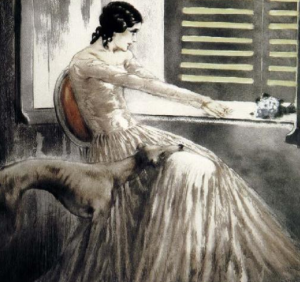
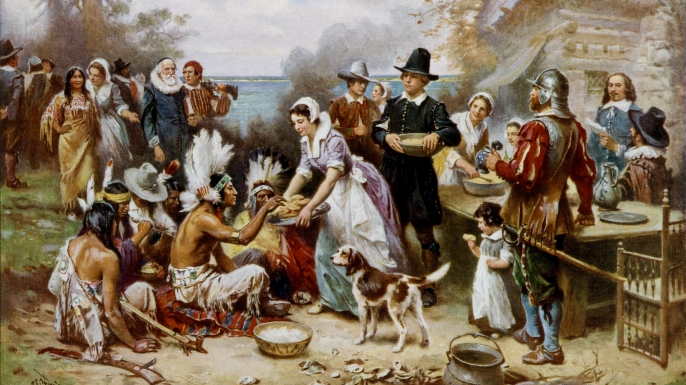



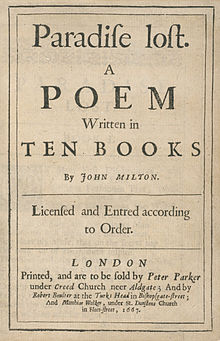
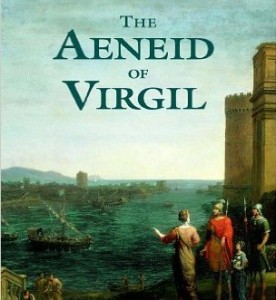 Fifth century grammarian Tiberius Claudius Donatus didn’t think highly of his son’s teachers. These instructors, he complained, were barely scratching the surface of the most eminent of Roman classics: Vergil’s Aeneid, the epic poem that chronicles the events leading up to Rome’s founding. So Donatus set out to write the commentary Interpretationes Vergilianae, attempting to prove that every line in the poem praises the emperor Augustus. Aeneas, the epic’s hero, was widely interpreted as the literary embodiment of Augustus. As long as the poem spoke only highly of Aeneas, Donatus’s task would be easy.
Fifth century grammarian Tiberius Claudius Donatus didn’t think highly of his son’s teachers. These instructors, he complained, were barely scratching the surface of the most eminent of Roman classics: Vergil’s Aeneid, the epic poem that chronicles the events leading up to Rome’s founding. So Donatus set out to write the commentary Interpretationes Vergilianae, attempting to prove that every line in the poem praises the emperor Augustus. Aeneas, the epic’s hero, was widely interpreted as the literary embodiment of Augustus. As long as the poem spoke only highly of Aeneas, Donatus’s task would be easy.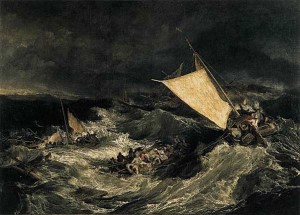 Donatus had asserted that Aeneas was semi-divine and thus “devoid of every fault,” unaffected by the fears and urges of mere mortals (
Donatus had asserted that Aeneas was semi-divine and thus “devoid of every fault,” unaffected by the fears and urges of mere mortals (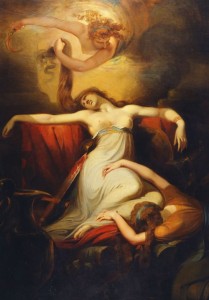 While his bravery disappoints in this case, at other times his judgement and perception are what fail him. When Aeneas escapes the storm and lands in Carthage, he seduces the Carthaginian queen Dido and moves into the palace with her; she believes they are married. Then the gods order him to continue his journey. Aeneas handles the situation terribly, initially hiding his departure from Dido and then justifying himself with the impersonal argument, “It is right for us too to search out a foreign kingdom” (IV. 50). She, despairing, asks him point-blank, “Does my love not hold you, nor my pledge I once gave you, nor the promise that Dido will die a cruel death?” (IV. 307-308, emphasis added). Later, when Aeneas meets her in the Underworld after she has committed suicide, he has the audacity to say, “Alas, was I the cause of your dying?… I did not think my leaving there would ever bring such grief to you” (VI. 457, 462-463). He is either lying through his teeth or had truly been an imperceptive fool. Then, while back on the open ocean, personified Sleep bewitches his helmsman Palinurus and throws him overboard. When Aeneas realizes his helmsman has been lost, he laments, “Oh, far too trusting of the calm sea, and the sky, you’ll lie naked, Palinurus, on an unknown shore” (V. 870-871). Once again, Aeneas has completely misread the situation. His friend had not trusted the sea; he had resisted Sleep, saying, “Do you tell me to trust the sea’s placid face…I whom a clear sky has deceived so often?” (V. 48, 51). Aeneas knows that the gods have been harassing his crew throughout the journey; why, then, is he so quick to blame his helmsman?
While his bravery disappoints in this case, at other times his judgement and perception are what fail him. When Aeneas escapes the storm and lands in Carthage, he seduces the Carthaginian queen Dido and moves into the palace with her; she believes they are married. Then the gods order him to continue his journey. Aeneas handles the situation terribly, initially hiding his departure from Dido and then justifying himself with the impersonal argument, “It is right for us too to search out a foreign kingdom” (IV. 50). She, despairing, asks him point-blank, “Does my love not hold you, nor my pledge I once gave you, nor the promise that Dido will die a cruel death?” (IV. 307-308, emphasis added). Later, when Aeneas meets her in the Underworld after she has committed suicide, he has the audacity to say, “Alas, was I the cause of your dying?… I did not think my leaving there would ever bring such grief to you” (VI. 457, 462-463). He is either lying through his teeth or had truly been an imperceptive fool. Then, while back on the open ocean, personified Sleep bewitches his helmsman Palinurus and throws him overboard. When Aeneas realizes his helmsman has been lost, he laments, “Oh, far too trusting of the calm sea, and the sky, you’ll lie naked, Palinurus, on an unknown shore” (V. 870-871). Once again, Aeneas has completely misread the situation. His friend had not trusted the sea; he had resisted Sleep, saying, “Do you tell me to trust the sea’s placid face…I whom a clear sky has deceived so often?” (V. 48, 51). Aeneas knows that the gods have been harassing his crew throughout the journey; why, then, is he so quick to blame his helmsman?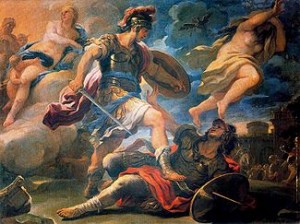 The text even mentioned Anchises, as if to remind Aeneas of his father’s former advice. Turnus has lowered his eyes “in submission” and stretched out his hands “in defeat”: he is the epitome of a conquered, humbled man. Aeneas, however, does not spare the defeated. He notices his friend Pallas’s belt on Turnus’s waist, and, “blazing with fury,” stabs him to death (XII. 946).
The text even mentioned Anchises, as if to remind Aeneas of his father’s former advice. Turnus has lowered his eyes “in submission” and stretched out his hands “in defeat”: he is the epitome of a conquered, humbled man. Aeneas, however, does not spare the defeated. He notices his friend Pallas’s belt on Turnus’s waist, and, “blazing with fury,” stabs him to death (XII. 946).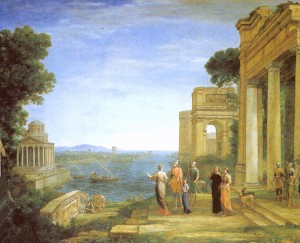 What is so noteworthy about this opening is that Carthage is not just any city, but Rome’s archenemy, its rival in three costly Punic Wars. Rather than vilifying Carthage, however, the city is held up as the goddess’s favored place: she had even chosen to keep her prized possessions there. Romans, on the other hand—“the offspring derived from Trojan blood”—were the conquerors who would despoil a goddess’s most sacred city. This passage does not just demote Rome as unimportant compared to Carthage; it vilifies Rome.
What is so noteworthy about this opening is that Carthage is not just any city, but Rome’s archenemy, its rival in three costly Punic Wars. Rather than vilifying Carthage, however, the city is held up as the goddess’s favored place: she had even chosen to keep her prized possessions there. Romans, on the other hand—“the offspring derived from Trojan blood”—were the conquerors who would despoil a goddess’s most sacred city. This passage does not just demote Rome as unimportant compared to Carthage; it vilifies Rome.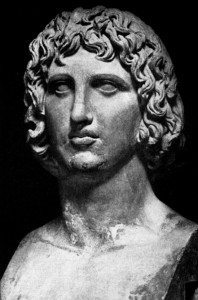 We know that Augustus and Vergil were fairly close acquaintances. We know that in Vergil’s Georgics, published ten years before the Aeneid, he had written, “Soon I’ll prepare myself to speak of [Augustus] Caesar’s fiery battles, and take his name forward, famous” (III. 47). We also know that Vergil was watching Augustus amass more and more power during those ten years. Conspiracy theorists point out that in 19 BCE, right after Vergil had finished his draft of the Aeneid, he took a trip to Greece, the place Roman authors went when they wanted to leave town for a while. On the way, he coincidentally ran into Augustus, and Vergil grew ill and died the next day. (Augustus loved to use poison to dispatch his enemies.) Vergil had asked in his will for the Aeneid to be burned: was this because he hadn’t put his finishing touches on the poem or because he could no longer bear to publish a work that would serve as propaganda?
We know that Augustus and Vergil were fairly close acquaintances. We know that in Vergil’s Georgics, published ten years before the Aeneid, he had written, “Soon I’ll prepare myself to speak of [Augustus] Caesar’s fiery battles, and take his name forward, famous” (III. 47). We also know that Vergil was watching Augustus amass more and more power during those ten years. Conspiracy theorists point out that in 19 BCE, right after Vergil had finished his draft of the Aeneid, he took a trip to Greece, the place Roman authors went when they wanted to leave town for a while. On the way, he coincidentally ran into Augustus, and Vergil grew ill and died the next day. (Augustus loved to use poison to dispatch his enemies.) Vergil had asked in his will for the Aeneid to be burned: was this because he hadn’t put his finishing touches on the poem or because he could no longer bear to publish a work that would serve as propaganda?